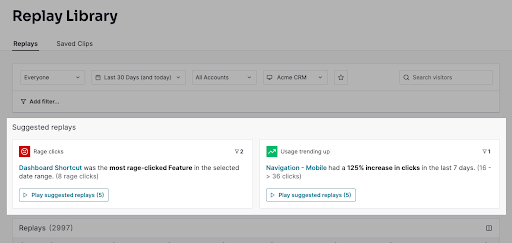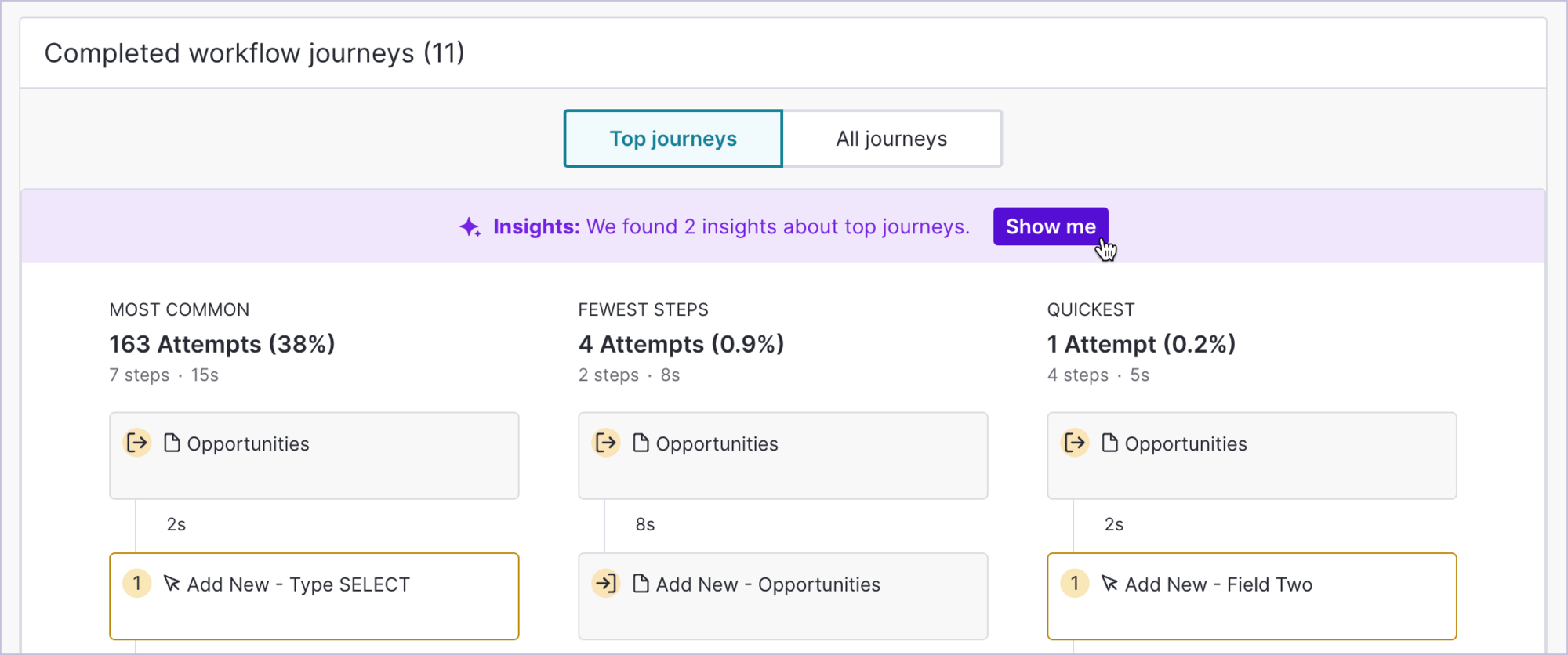I’ve seen a lot of data in my 3.5 years at Pendo, but there’s one statistic I always come back to: 80% of features are rarely or never used inside applications.
In other words, 80% of the work Product Managers (PMs) like you do is wasted on features that sit on the shelf. Waste is an accepted part of how companies build digital products—but if 80% of packages were lost, we’d be calling for change.
Why is this the status quo for Product Development? It’s time to put an end to this waste. A reckoning is coming for your company, if it hasn’t already.
Product data often becomes noise to sort through
CEOs and CFOs are demanding that their product organizations run a more efficient R&D organization and build the right features more often. If you can ensure that only 50% of your features go unused, or even less, you’ve just increased the ROI of one of the most expensive teams at the company by 30% (down to 50%).
At Pendo, we do this by giving companies like yours the quantitative, qualitative, and visual data needed to understand customers, validate ideas, and align teams. But it’s not enough to simply have data—you need insights.
Let’s take a look at new, AI-powered innovation across the three key data types in Pendo: Visual, qualitative, and quantitative.
1. Uncover visual signal with suggested replays
Session Replay tools give you visual playbacks of in-product user behaviors. It’s an invaluable tool to understand your product usage data and UX, replicate bugs, and gather evidence to win resources. Unfortunately, replay tools often become a mess you get stuck sorting through on a Sunday afternoon.
Learn AI use cases and best practices for product managers
With an all-in-one product experience platform like Pendo, your Product Analytics are connected to your replay data. PMs can quickly find meaningful replays based on specific usage or metadata from your CRM. And with a little bit of AI, you can do even more.
Suggested replays are AI-generated usage insights that help you understand what’s happening in your application. As you filter your replay data, Pendo will automatically surface insights specific to that data and share the Replay footage. In Pendo, you’ll see the suggested replays feature at the top of your Replay Library:
Maybe usage is dropping, trending up, or there’s an influx of rage clicks. All potential insights that you may or may not have found. When you click into replay footage, you can quickly watch, favorite, and share the insights with others. Connected with Data Explorer (DX), you can also validate if Suggested Replay trends are one-off occurrences or if they’re signaling a bigger problem within your product.
Pendo Session Replay already gives you more signal, and suggested replays will get you there even faster. Spend less time sorting through replays, deliver value faster, and surface insights you may have never found. If you have Pendo Session Replay, view it live.
2. Standardize, summarize, and suggest with Listen and AI
Pendo Listen, our customer intelligence solution, gives you a 360° view of your customers’ needs, backed by data and accelerated by AI. PMs like you use Listen to capture and understand qualitative data, validate your ideas with customers, and turn them into an internal roadmap.
We have four core AI features within Listen:
- Data standardization: Qualitative data comes in all shapes and sizes. Whether you’ve been using .CSV files and sticky notes—or Salesforce, Zendesk, and Pendo—to capture customer feedback, you can bring all of your data to Pendo and let AI clean it up.
- AI summaries: Even after you centralize your qualitative data, it can take weeks of sorting and analysis to string together a coherent, actionable path forward. AI summaries synthesize large volumes of feedback data, so you can understand the big-picture and get right to insights.
- Suggested ideas: Your feedback is squeaky clean and brimming with insights. Now, use AI-powered suggested ideas to speed up ideation and address user feedback. Close the loop by linking feedback directly to ideas, and send them to your roadmap to prove you’re making data-backed decisions.
If you’re a Pendo user, you know we had a similar solution called Feedback. We also had a product called Validate and a Roadmapping solution. Combining those tools, and surrounding them with AI, helps you build a discovery process that’s truly successful.
データ主導のAIを活用したプロダクトディスカバリーを開始
3. Find faster quantitative signals
You should be speeding up what you were already doing with Pendo—but you should also use AI to transform how you build and deliver products. Great AI just isn’t possible without great data.
In Pendo, you can use AI to understand quantitative data in two key ways: Dashboards and journey insights.
ダッシュボードテンプレート
Dashboards are an extremely powerful tool to get buy-in from executive leadership, report on progress, and align teams around a vision or new project. But unfortunately, most dashboards are incomplete or simply don’t exist because it’s too manual or a low priority.
With dashboard templates, you can automatically create reporting in minutes so you can deliver more signal to stakeholders.
Journey Insights
Workflow journeys let you examine a specific process your customers are using your app for. For example, you can answer: How do users build a dashboard in your app? or How do your employees use Salesforce to build a quote?
When you dissect workflows in Pendo, you’ll see new AI tools that automatically suggest how to improve these processes. Insights let you cut through the noise, and get right to your most valuable insights in just a few clicks.
The product teams at Pendo are obsessed with turning data into insights, eliminating noise, and providing signal.
There’s a lot that Pendo AI is delivering, but the idea of providing signal in the noise of data is core to the mission. We think it’s the secret to jumping the smart and capable product people who use Pendo forward. They’re the ones who’ll build and deliver software that is used, loved, and delivers on business outcomes. To learn more, request a demo.


![[object Object]](https://cdn.builder.io/api/v1/image/assets%2F6a96e08774184353b3aa88032e406411%2F39f3ccde352b460cbf348ccc952054cd?format=webp)



